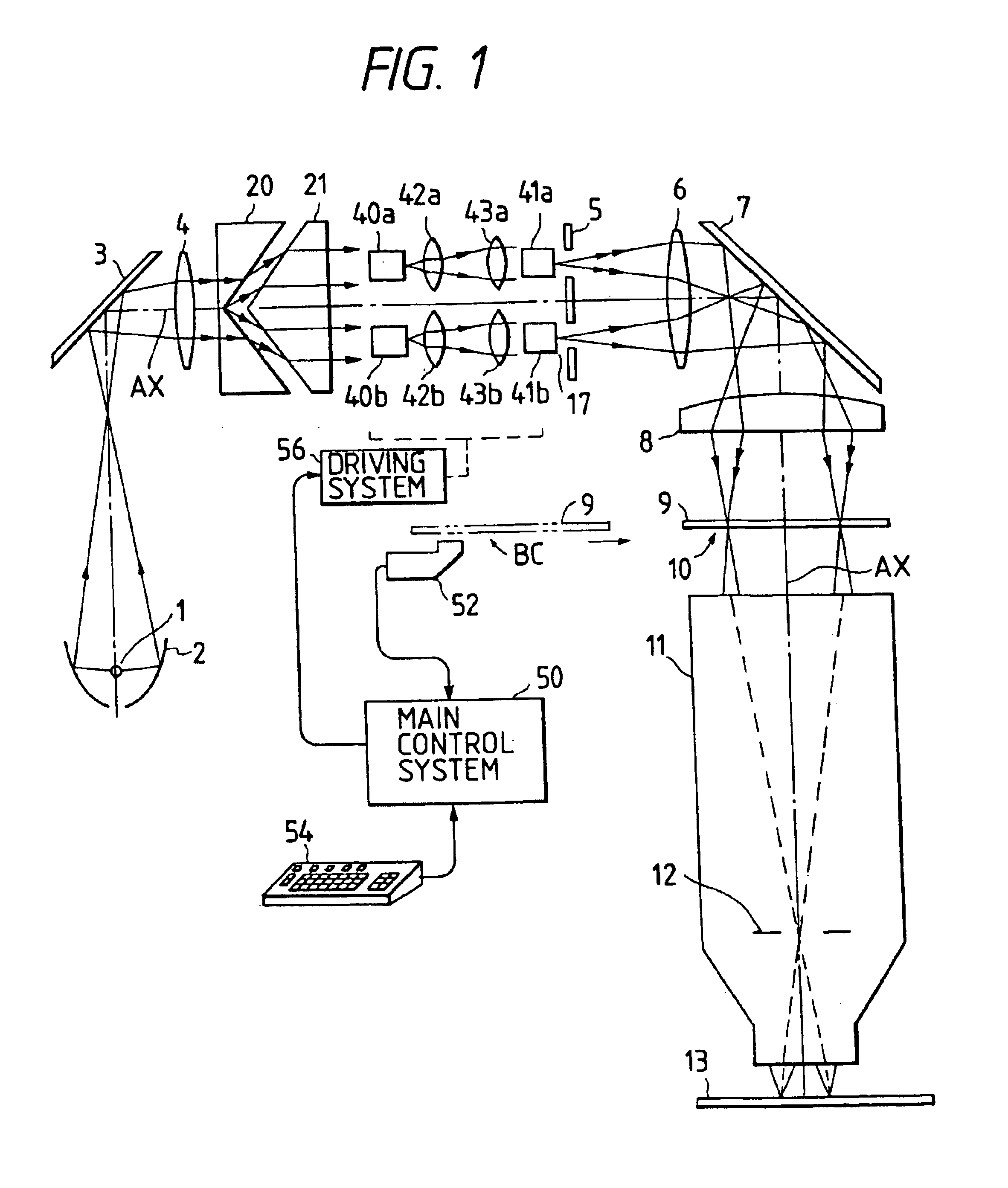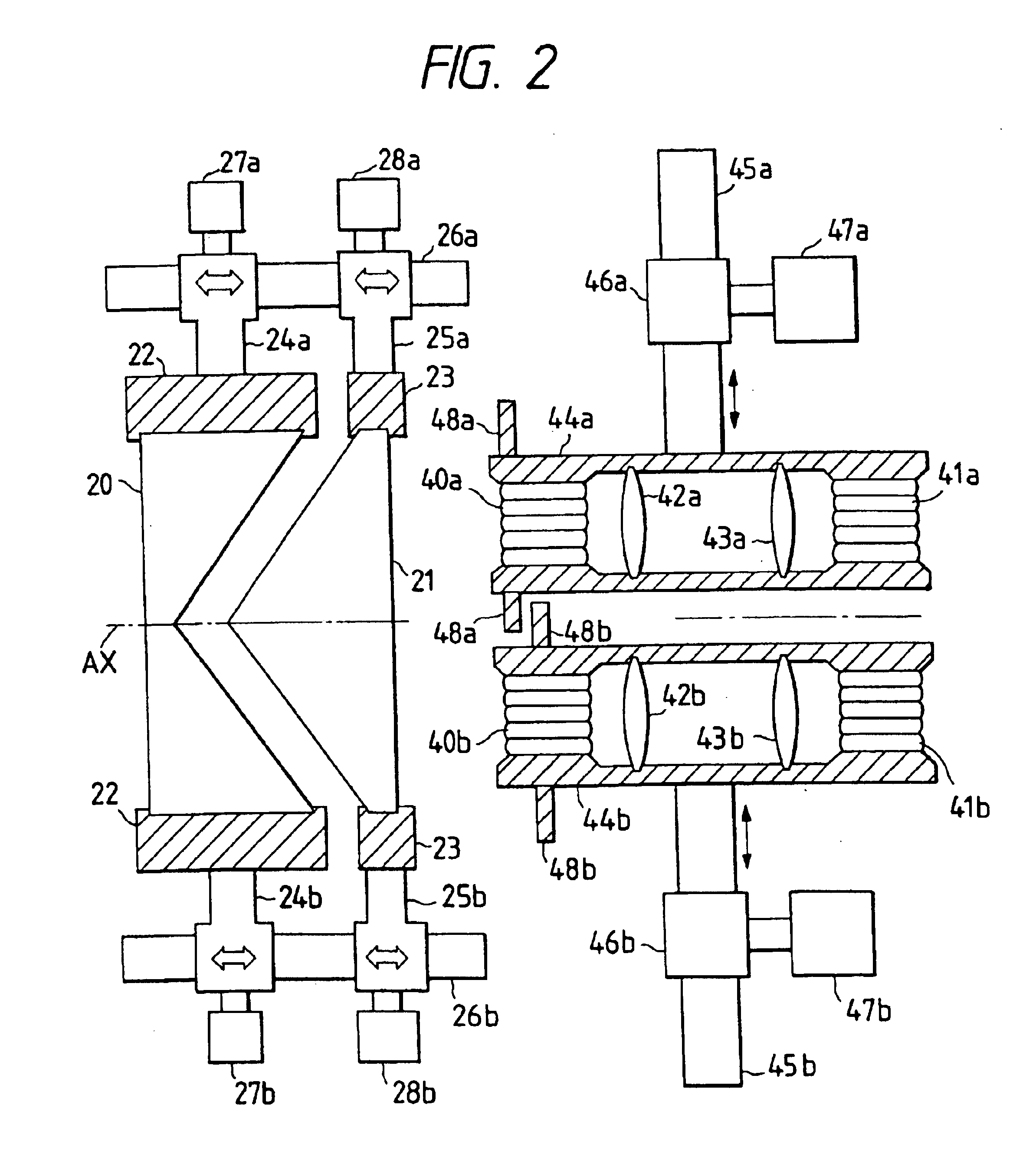Projection exposure apparatus
- Summary
- Abstract
- Description
- Claims
- Application Information
AI Technical Summary
Benefits of technology
Problems solved by technology
Method used
Image
Examples
first embodiment
FIG. 1 illustrates the present invention in which two polyhedron prisms are used to form a light dividing optical system.
Irradiation light beams emitted from a light source 1 such as a mercury lamp are gathered by an elliptical mirror 2 before they are made to be substantially parallel beams by a bending mirror 3 and an input lens 4 so that the light beams are incident on light dividing optical systems 20 and 21. A light divider according to this embodiment comprises a first polyhedron prism 20 having a V-shape concave and a polyhedron prism 21 having a V-shape convex. The irradiation light beams are divided into two light beams by the refraction effect of the aforesaid two prisms 20 and 21. The divided light beams are respectively incident on second fly-eye lenses 40a and 40b.
Although two fly-eye lenses 40a and 40b are used in this embodiment, the quantity of them may be determined arbitrarily. Although the light dividing optical system is arranged to divide the light beams into t...
PUM
 Login to View More
Login to View More Abstract
Description
Claims
Application Information
 Login to View More
Login to View More - R&D
- Intellectual Property
- Life Sciences
- Materials
- Tech Scout
- Unparalleled Data Quality
- Higher Quality Content
- 60% Fewer Hallucinations
Browse by: Latest US Patents, China's latest patents, Technical Efficacy Thesaurus, Application Domain, Technology Topic, Popular Technical Reports.
© 2025 PatSnap. All rights reserved.Legal|Privacy policy|Modern Slavery Act Transparency Statement|Sitemap|About US| Contact US: help@patsnap.com



